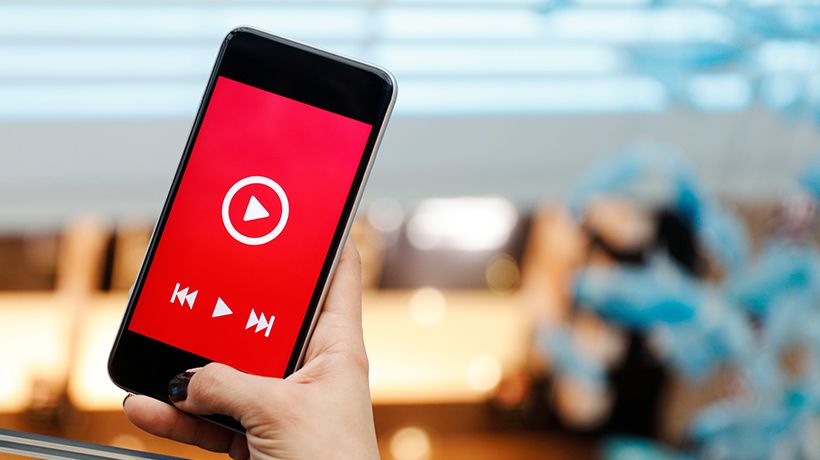Where Does "Actual" Learning Happen In The Modern Work World?
While childhood learning focuses on what knowledge is useful to children later in life, andragogy is learner- and situation-centric. Adult learning in today’s corporate world is about direct application. Two ways in which learning typically happens are the following:
- Moment-of-need learning
Learning something at the moment when its application is most critical—for example, learning about a feature in the new Payroll system so that the employee can input their timesheet now! - Learning in the flow of work
This is about learning that enables the employee to enhance their performance or carry out a work step more efficiently—while working.
And today most learning happens outside of formal learning environments. In the workplace, adults learn:
- Informally
As a result of watching others or through interactions with mentors, peers, and colleagues. - Through social and collaborative learning
While participating in social interactions outside the workplace, working on group projects, or collaborating on work-based initiatives.
Understanding these learner-centric nuances is critical for L&D professionals in order for them to create effective learning, especially in today’s hybrid workplace.
Why Is Microlearning A Great Fit For Driving Learning And Performance In The Hybrid Workplace?
Our work world is a super busy place. By using bite-sized microlearning nuggets, L&D teams can create personalized, learner-centric learning journeys. Because each learner learns differently, microlearning can be tailored to create an impact at various cognition levels.
The learning environment challenges of a hybrid workforce are varied too. Unless trainers consider elements such as time and place, technological abilities, distractions, preferred modes of learning, learning priorities, comprehension levels, potential for application, etc., when designing training, corporate training will not meet its learning objectives.
Microlearning offers flexibility, ease of consumption, and engagement that match learner needs and expectations.
Why Do Most Organizations Get Microlearning Wrong?
Unfortunately, most organizations get microlearning wrong. They believe that simply "chunking up" existing curriculum will do the trick. Wrong!
To successfully leverage microlearning, L&D teams must first understand their audience’s needs—including the learning preferences, needs, and the challenges of hybrid learners—before developing short, action-oriented, learning nuggets for targeted outcomes. Then, they must package the content in such ways so that learners can readily apply it on the job.
Here are some tips and best practices for microlearning success:
- Design modular, small-footprint microlearning content that can be used in the flow of work. Ensure the content remains focused on specific (one or two) outcomes.
- Make the content accessible so that learners can consume it anywhere, anytime, and on any preferred device.
- Given that many virtual learners use personal networks and devices to learn, don’t overload microlearning content with unnecessary graphics or high-def content. Some hybrid learners may not have the home network bandwidth or personal data plans to support such features.
- Ensure the content is intuitively hosted so that learners can quickly access it at the moment of need.
- Use a diverse mix of content, including short videos, eBooks, infographics, podcasts, summary PDFs, sample checklists, quick reference guides, and how-to content.
- Make sure the formal training links extensively to your bank of microlearning content so that learners can use this bank for review and refresher purposes.
- When designing formal ILT and VILT, use microlearning as pre, during, and post-learning content to help learners access optional and supplementary materials. This will reinforce their trust in such resources and help them explore and discover the power of microlearning as a performance enhancer [1].
Examples Of Microlearning In Corporate Training
Here are some great real-world examples of microlearning in action in the corporate training world:
1. Creating An On-Demand Learning Solution For Training Trainers
The purpose of this course was to create a sustainable, simplistic, on-demand training that volunteer trainers could use in their moments of need and at the same time learn concepts in the process.
- Immersive microlearning formats were used as the primary approach, and this was amalgamated with numerous scenarios derived from real-life instances and several performance support materials in the form of downloadable documents.
- Concepts were driven through relatable scenarios along with performance support tools to make learning relevant.
- Microlearning formats like videos and podcast-based activities through minimalist designs were utilized for an immersive experience.
- Overall, the course boosted learners’ confidence to apply their learnings from the training directly to their training sessions.
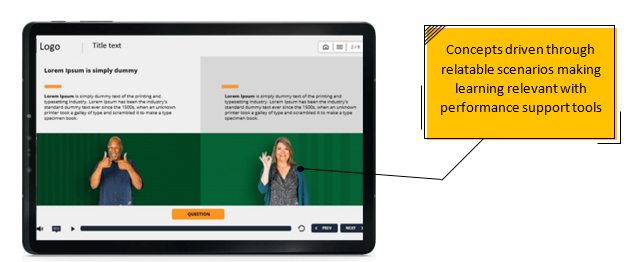

2. Empowering Leaders With Just-In-Time Learning Solutions
The purpose of this course was to build a comprehensive series of leadership trainings to equip and empower leaders in developing themselves and their teams successfully.
- A microlearning approach was applied to provide just-in-time learning by using appropriate formats such as videos, relatable practice scenarios, interactive learning elements, and a wide range of downloadable performance support tools that leaders could consume on the go.
- It involved a range of videos as a key mode for bite-sized learning and performance support and short, intuitive practice scenarios to promote decision-making as part of micro-challenges.
- This course positively impacted the performance efficiency of leaders post the completion of the training (ESAT surveys) and promoted higher completion rates because of the just-in-time format.
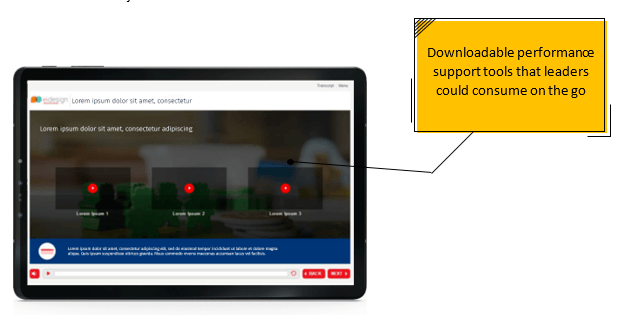
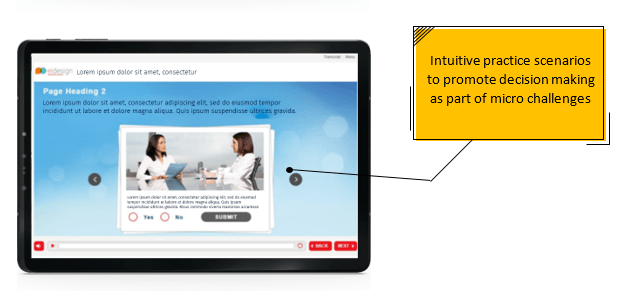
3. Driving A Company Culture Program Through An Immersive Learning Experience
The purpose of this course was to familiarize employees with their organization’s culture, vision, mission, and values in a consistent and impactful manner while pursuing a steady behavioral change.
- A portal-based microlearning approach was used to ensure easy access to all learning nuggets and further empowerment through short, gamified micro-assessments to provide fun yet meticulous cognition checks.
- Gamified micro-activities were interspersed for cognition checks and practice through fully mobile responsive designs. The learning continuum was ensured through action plans provided as performance support tools at the end of each nugget.
- Employees demonstrated increased engagement and participation, and they were able to demonstrate the behavioral aspects of the organization’s culture as a result of the training.
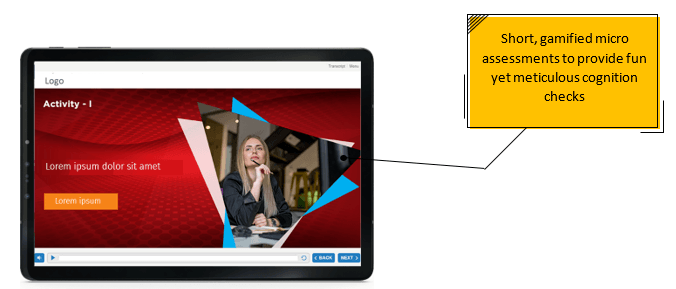

4. Enhancing Mentoring Programs For Leaders Through Microlearning
A unique microlearning program was created for an FMCG giant that has transformed the way their leaders perceive a crucial process like mentoring.
- It featured short, succinct concepts for effective learning by employing "microlearning within a macrolearning path" and making the learning available for leaders on their mobile phones at all times.
- The course styled custom illustrated visuals depicting microlearning nuggets within a macrolearning journey for a clear bird’s-eye view. Crisp analogies were used to convey concepts, and infographics and iPDFs were provided as takeaways or job aids.
- The leaders learned how to apply mentoring concepts that helped both mentors and mentees. The enrollment in mentor-mentee programs was significantly higher at an organizational level post the training.
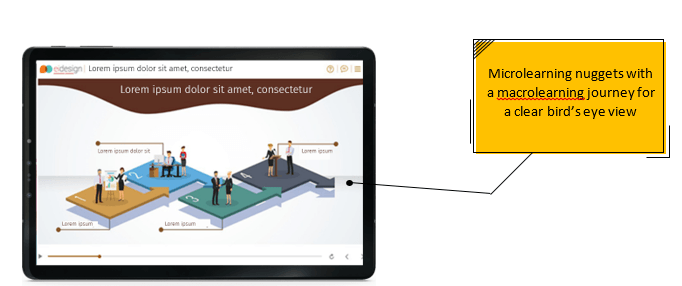
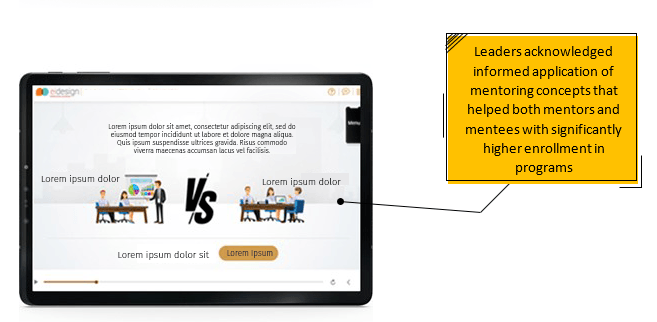
5. Empowering New Joiners With A Compact Learning Nugget
The primary goal of the training was to introduce new joiners to the IT function and familiarize them with the commonly used collaboration tools and resources. The training also aimed at sensitizing the audience to the basic aspects of information security.
- Several microlearning formats such as videos, short scenarios, activities, and a gamified assessment were used to increase learner engagement.
- The training leveraged a mentor-mentee approach, and the conversations made the experience highly immersive.
- The learning journey involved visiting two IT departments and interacting with experts to gain knowledge on the tools and resources available for new hires.
- An activity-driven approach ensured "learning by doing."
- The use of a new joiner as central character made the experience completely relatable to the learners and turned out to be a key success factor for the training.
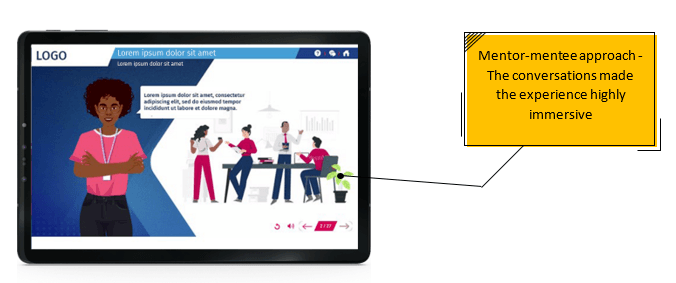
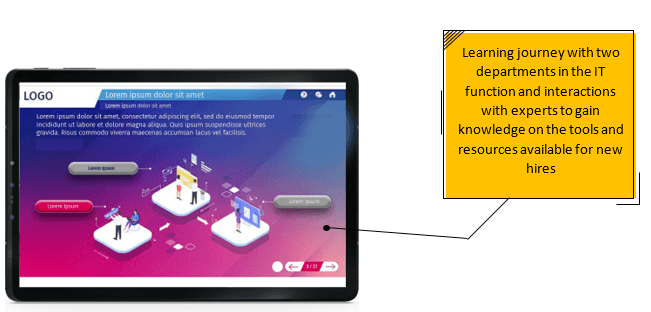
Parting Thoughts
Super busy workers today have less spare time to dedicate to self-improvement. Virtual employees, in the hybrid workplace, have environment-related challenges that test their engagement levels and make it harder to access learning content. The use of short-form microlearning content—as a core learning, performance support, and job improvement tool—is an ideal solution to these challenges.
While supporting learning at the point of need and learning in the flow of work [2], microlearning nuggets don’t overly tax a learner’s span of attention, while they also make learning more engaging and fun. The net result: Corporate trainers meet their learning objectives, while all learners in today’s hybrid workplace have equal opportunities to learn new skills, enhance existing ones, and improve their performance.
I hope the microlearning examples in this article will help you engage your learners and boost their performance.
Meanwhile, if you have any specific queries, do contact me or leave a comment below.
References:
[1] How to Drive Employee Performance with Microlearning
[2] 3 Microlearning Strategies to Promote Learning in the Flow of Work
Read More:
- eBook: How to Conduct an L&D Audit and Prepare a Strategic Plan for the Future
- Change Employee Behavior in the Workplace with These 5 High-impact Corporate Training Strategies
- How to Offset the Forgetting Curve in Your Employee Learning Programs with Microlearning
- How to Build Employee Learning Habits and Drive Continuous Learning in the Workplace with Microlearning
- How to Blend Microlearning and Macrolearning to Deliver a Higher Impact Workplace Training









